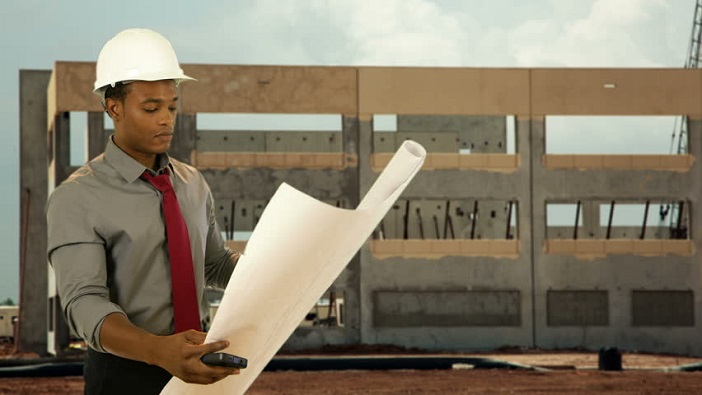Architect Tips for Designing Contemporary Residential Spaces
Recognizing the Diverse Occupation Paths Available for Aspiring Architect
As an ambitious Architect, you have a globe of occupation paths waiting for you. Whether you're drawn to conventional style or the subtleties of sustainable design, there's a specific niche that straightens with your interests.
Typical Architecture: Creating Frameworks and structures
Conventional architecture focuses on designing buildings and frameworks that blend capability with visual charm. As you explore this field, you'll value the detailed balance in between kind and function. You'll learn to attract motivation from historical styles, including components like proportion, products, and craftsmanship. Your layouts can reflect cultural heritage, showcasing local traditions while satisfying contemporary demands.
You'll develop abilities in drafting, model-making, and site evaluation, permitting you to picture and communicate your ideas efficiently. Involving with clients, you'll need to recognize their vision and equate it into possible layouts.
Moreover, building codes and sustainability techniques are crucial in your work, ensuring your structures are ecologically friendly and secure. As you grow in your career, you'll find possibilities in property, business, and even restoration jobs, each offering special difficulties. Accepting standard architecture leads the way for a satisfying profession that pays tribute to the past while forming the future.
Urban Preparation: Forming Neighborhoods and Public Spaces
As an aspiring Architect, you can play an essential role as a city organizer, transforming just how neighborhoods engage and work. By utilizing area involvement strategies, you'll assure that citizens have a voice fit their setting. Plus, incorporating lasting design principles will assist develop spaces that not just satisfy today's needs yet likewise protect the future.
Role of Urban Planners
While several may believe of architects as the sole enthusiasts behind structures, city organizers play a crucial role in forming the more comprehensive landscape of neighborhoods and public rooms. By collaborating with different stakeholders, you'll aid design parks, transport systems, and property locations that advertise social communication and accessibility. Your competence in spatial layout and neighborhood dynamics enables you to picture future growth while preserving social heritage.
Area Engagement Techniques
Reliable community involvement methods are essential for urban planners to ensure that the voices of homeowners are listened to and valued in the planning process. To promote meaningful dialogue, you ought to prioritize open discussion forums and workshops where neighborhood participants can reveal their ideas and problems. By actively incorporating and paying attention responses, you'll produce areas that reflect the community's needs, eventually leading to even more lasting and successful city atmospheres.
Lasting Layout Principles
When making metropolitan spaces, integrating sustainable style principles is vital for developing settings that flourish both ecologically and socially. Think about integrating environment-friendly rooms, like gardens and parks, to enhance biodiversity and boost air quality.
Designing with water preservation in mind is also crucial-- believe regarding rain gardens and permeable surfaces to take care of stormwater. Entailing area members during the planning procedure warranties that the rooms you develop fulfill their needs and urge social interaction. By embracing these principles, you'll contribute to vibrant, lasting urban landscapes that profit every person.

Landscape Architecture: Producing Sustainable Outside Atmospheres
As you explore landscape design, you'll discover essential layout principles that create useful and beautiful exterior spaces. Lasting methods play an important function in ensuring these environments grow while lessening ecological effect. Plus, you'll locate a selection of job chances that permit you to make an actual distinction in how individuals engage with nature.
Style Principles in Landscape
Comprehending layout principles in landscape style is essential for creating lasting outdoor settings that balance with nature. You'll need to contemplate components like balance, percentage, and scale to guarantee your designs feel natural and welcoming. Furthermore, pay focus to seasonal changes, making with products that enhance the surroundings year-round.
Sustainable Practices Introduction
Lasting methods in landscape design not just focus on aesthetic appeals yet additionally prioritize environmental health and resource conservation. By integrating indigenous plants, you boost biodiversity and lower the demand for chemical plant foods and chemicals. Applying effective watering systems assists preserve water and lessens drainage, securing close-by communities. You can create rooms that advertise soil health, such as using organic products and exercising permaculture principles. In addition, integrating environment-friendly infrastructure, like rainfall yards and porous pavements, aids in stormwater management and reduces urban warm. You contribute to a healthier earth and offer spaces that cultivate area link when you create outside environments with sustainability in mind. Eventually, these practices guarantee your designs benefit both people and the atmosphere for many years to come.
Job Opportunities Expedition
With a strong structure in lasting techniques, landscape design provides a selection of profession paths that allow you to make a meaningful impact on the environment. Urban organizers commonly team up with landscape architects to produce green read more rooms in metropolitan settings, improving city livability. If you're passionate concerning education, think about becoming a landscape design teacher, inspiring future generations.
Sustainable Design: Focusing on Eco-Friendly Practices
As you explore your occupation in style, welcoming environmentally friendly methods can set you apart in a competitive area. Sustainable design concentrates on developing buildings that minimize ecological influence while enhancing occupant well-being. By incorporating eco-friendly materials, energy-efficient systems, and lasting structure methods, you'll contribute to a greener future.
Start by gaining knowledge of eco-friendly qualifications like LEED or BREEAM, which can strengthen your qualifications. Take into consideration how natural light, air flow, and thermal performance can enhance style. Work together with designers and environmental consultants to introduce remedies that lower waste and conserve resources.
Don't neglect the importance of area involvement-- engaging local stakeholders can inspire designs that balance with the environment. As clients significantly prioritize sustainability, your expertise in green methods will not just attract projects but also satisfy your enthusiasm for accountable design. Accept this critical facet of the career, and see your job prosper.
Historical Conservation: Shielding and Restoring Cultural Heritage
While you commence on your architectural journey, consider the vital function of historic preservation in maintaining our social heritage. This area concentrates on the defense and restoration of significant structures, sites, and structures that tell the tales of our past. By taking part in historical preservation, you'll help safeguard the architectural legacy that forms area identification.
As a historical preservation Architect, you'll analyze historical value and examine the condition of structures. You'll function carefully with conservationists and chroniclers to ensure genuine reconstruction methods are utilized. This profession course enables you to mix imagination with research, allowing you to design remedies that appreciate original materials and workmanship.
Your work not only adds to sustainability by recycling existing buildings yet likewise cultivates a sense of satisfaction within communities. Accepting this course will assist you come to be a guardian of history, maintaining the stories and visual appeals that improve our lives.
Interior Design: Enhancing Indoor Spaces
Historic preservation and indoor architecture both share a commitment to boosting the built atmosphere, yet they concentrate on various facets. While historic conservation stresses maintaining a framework's social and historical worth, indoor design zeroes in on enhancing indoor areas for functionality and aesthetic appeals.
As an ambitious Architect, you'll locate that indoor design enables you to blend creative thinking with technological abilities. You'll make rooms that not only look excellent but additionally promote convenience and efficiency. This area involves comprehending how light, color, and products interact within a room, affecting mood and functionality.
You'll work with numerous projects, from domestic homes to industrial offices, making sure that each environment meets the requirements of its owners. By focusing on user experience, you can transform insides right into functional and motivating rooms, making a substantial influence on just how individuals engage with their surroundings. Accept the opportunity to enhance interior settings and form the method people live and work.
Industrial Style: Merging Functionality With Aesthetics
Commercial style plays a necessary function in creating items that flawlessly blend aesthetic appeals with functionality, ensuring that what you make use of day-to-day is not just visually appealing but additionally functional. As a hopeful Architect, you can involve yourself in this field, concentrating on creating whatever from furniture to consumer electronics. Your job involves understanding customer requirements, products, and producing processes, permitting you to create cutting-edge options that enhance day-to-day experiences.
In industrial layout, you'll commonly work together with suppliers, marketers, and designers, ensuring that your styles are not just stunning yet also viable. You'll discover to stabilize form and function, focusing get more info on functionality without sacrificing style. By sharpening your skills in mapping out, 3D modeling, and prototyping, you'll be well-equipped to bring your concepts to life. This career path uses a vibrant atmosphere where imagination fulfills practicality, making it a gratifying selection for architects curious about forming the products of tomorrow.
Frequently Asked Questions
What Educational Certifications Do I Required to Become an Architect?
To come to be a designer, you'll need a specialist level in architecture, typically a Bachelor's or Master's. In addition, you'll need to finish an internship and pass the Architect Enrollment Exam to exercise lawfully.
Exist Qualification Requirements for Various Building Job Paths?
Yes, there're certification requirements for different building courses. Architect. You'll require to pass exams, complete teaching fellowships, and in some cases pursue specialized training, relying on your chosen emphasis, like landscape architecture, urban layout, or historic conservation
What Software Program Abilities Are Important for Engineers Today?

How Can I Gain Practical Experience While Researching Design?
You click here can gain sensible experience by interning at architectural companies, joining layout competitors, offering for community projects, or teaming up with classmates on real-world jobs. These chances enhance your skills and build useful links in the market.
What Work Opportunities Exist Outside Typical Architecture Firms?
You can discover various task possibilities outside conventional style companies, like urban planning, interior decoration, landscape design, building and construction administration, property development, or perhaps duties in sustainability consulting. Each offers distinct difficulties and incentives.
Whether you're drawn to standard style or the subtleties of sustainable style, there's a particular niche that aligns with your interests.When creating city rooms, incorporating sustainable style concepts is critical for creating environments that prosper both environmentally and socially.As you discover landscape style, you'll discover important style concepts that produce functional and stunning outside areas.Recognizing layout concepts in landscape style is essential for creating sustainable outdoor environments that balance with nature.In commercial style, you'll usually team up with engineers, producers, and online marketers, guaranteeing that your designs are not only beautiful but also possible.